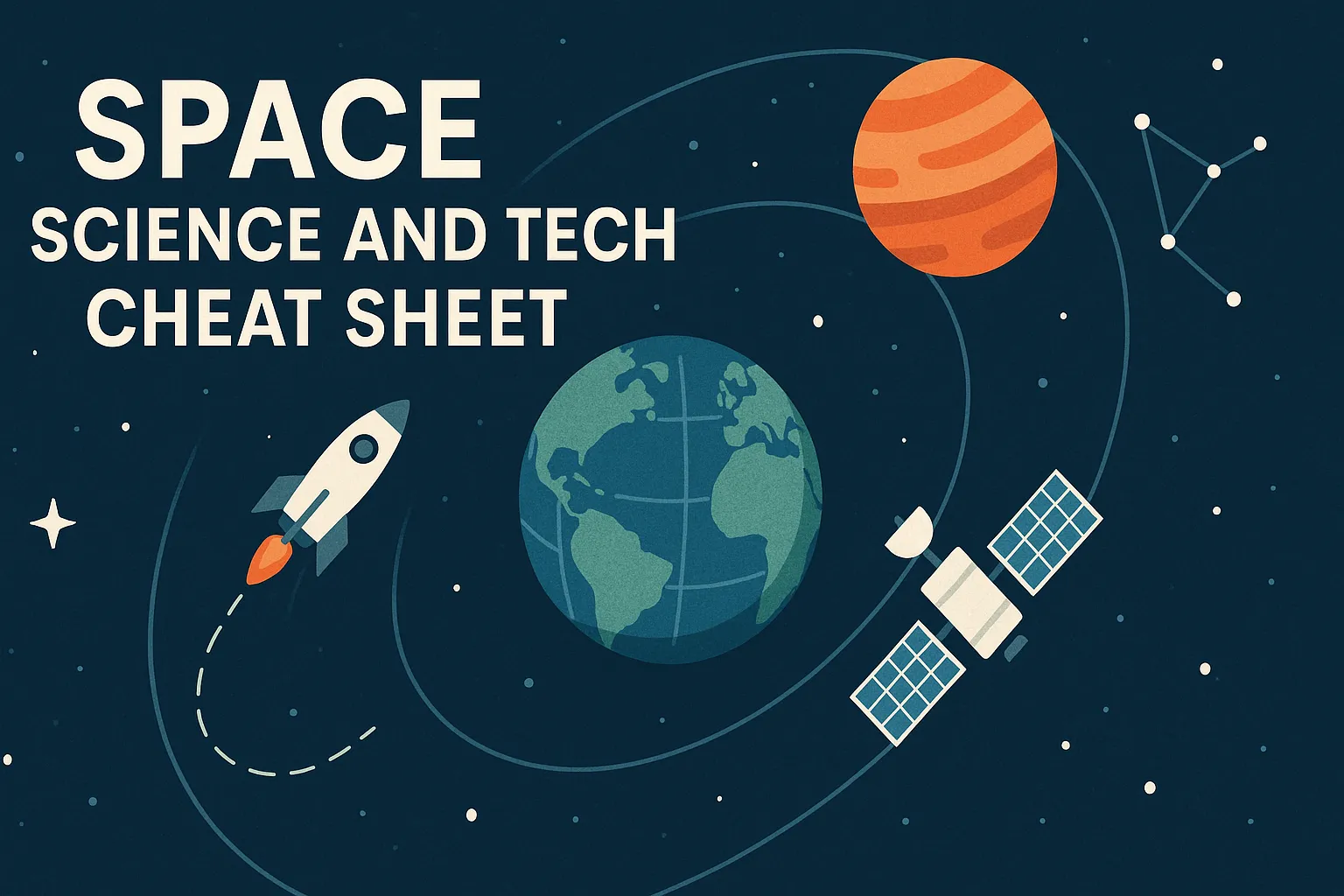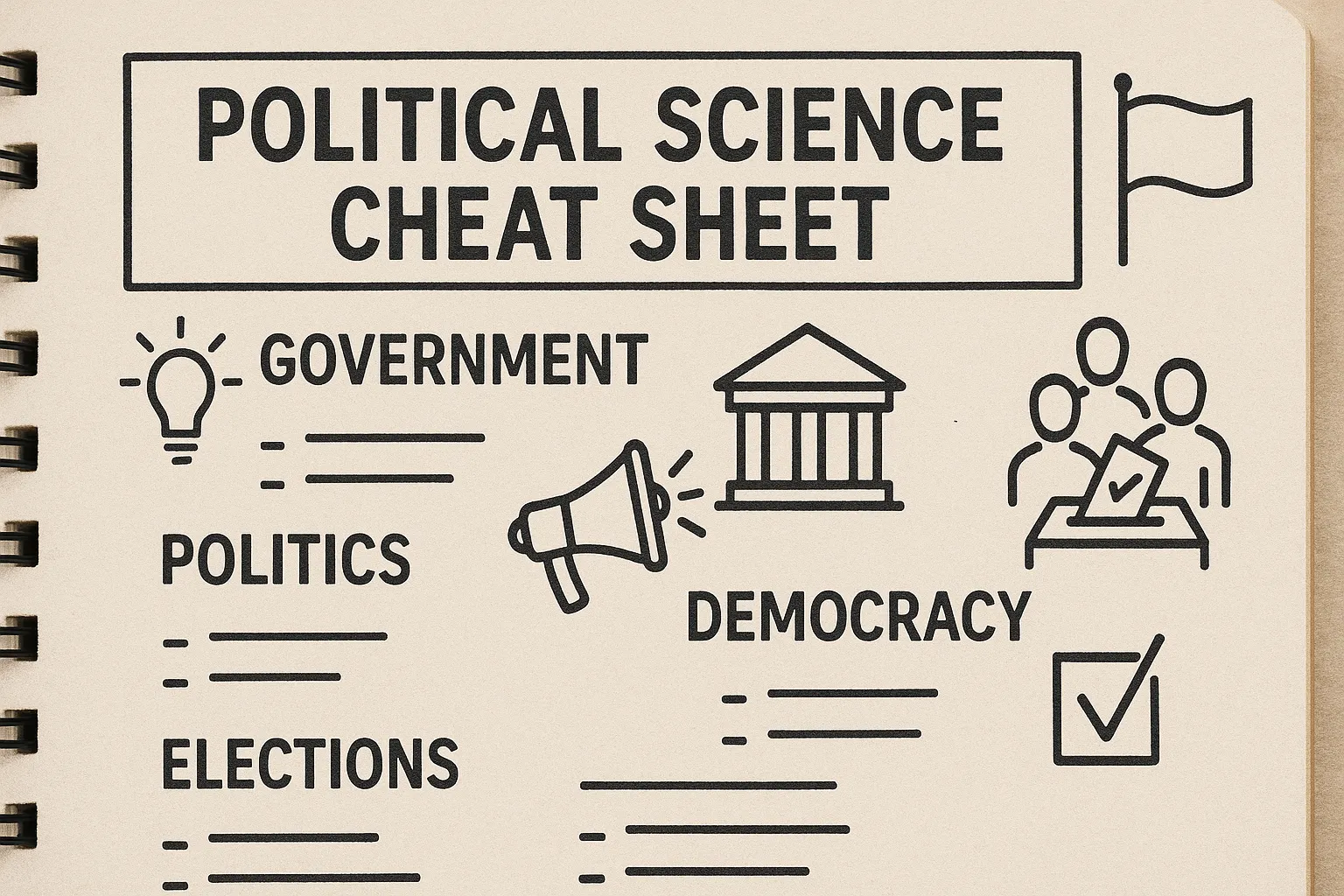Most Comprehensive Notes for Interior of the Earth in UPSC Prelims 2025
Last Updated
29th April, 2025
Date Published
28th April, 2025
Share This Post With Someone
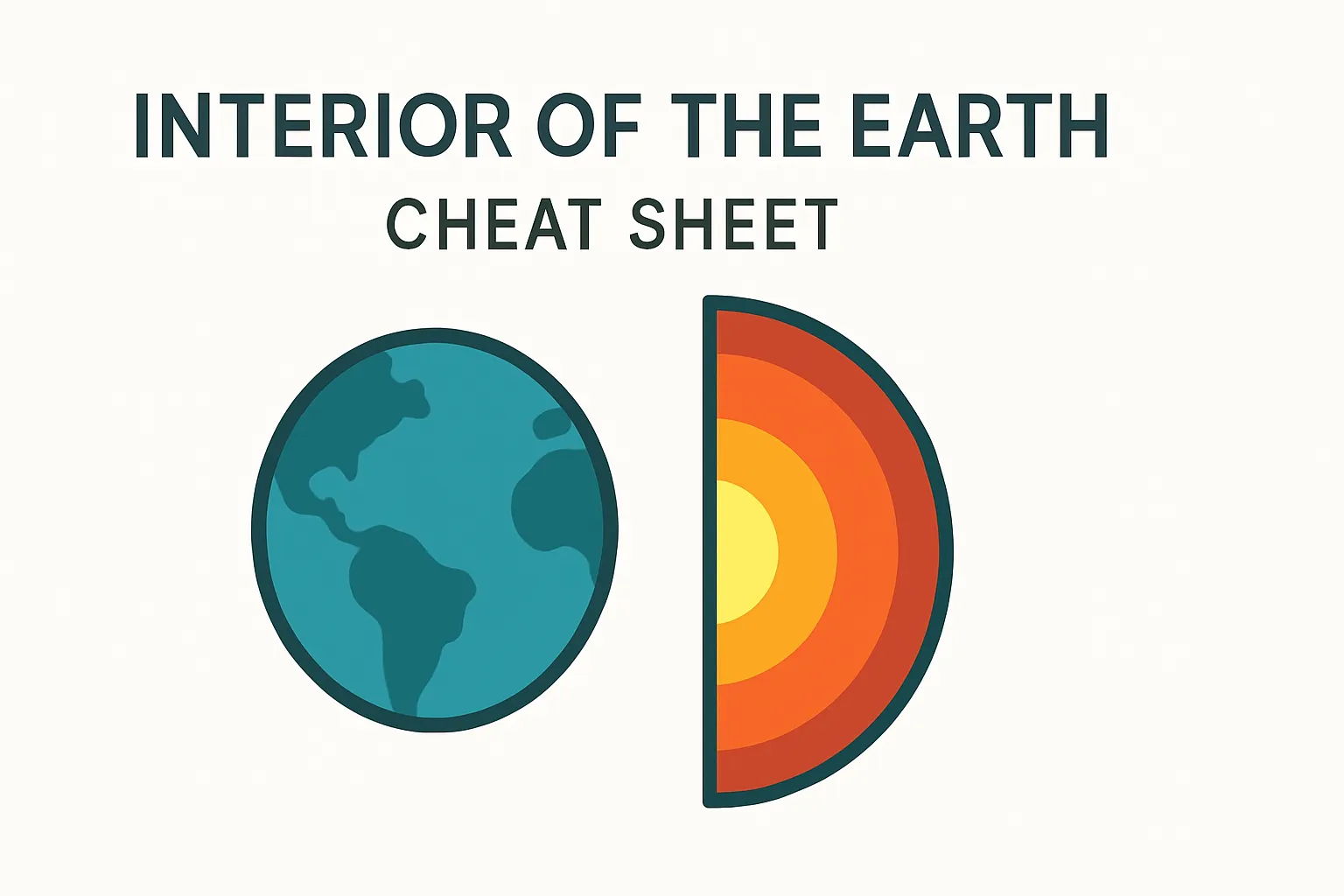
Want To Print The Cheat Sheet & Prepare On The Go?
Formation & Differentiation of Earth
The Earth’s interior formed through planetary differentiation, a process where denser materials like iron and nickel sank to form the core, while lighter silicates rose to form the mantle and crust. During cooling, outgassing released water vapor and gases (e.g., nitrogen, sulfur compounds) from the molten mantle, contributing to the early atmosphere. Materials that remained liquid during this phase, termed incompatible elements, solidified later to form the brittle crust (e.g., granite, basalt).
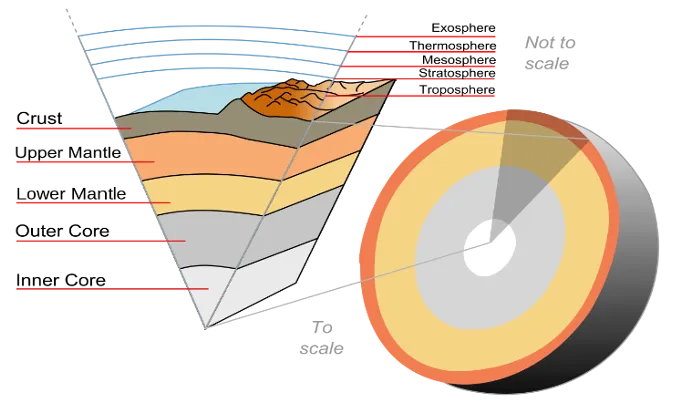
Layers of the Earth
(A) Crust
Oceanic Crust (SiMa):
o Thickness: 5–10 km.
o Composition: Basalt rich in silicate and magnesium.
o Formation: Created at mid-ocean ridges and destroyed in subduction zones due to plate tectonics.
o Age: Younger (rarely exceeding 200 million years).
Continental Crust (SiAl):
o Thickness: Up to 70 km under mountain ranges.
o Composition: Granite rich in silicate and aluminium.
o Age: Older (up to 4 billion years) due to minimal recycling.
(B) Mantle
Lithosphere:
o Includes the crust and rigid upper mantle (up to 100 km depth).
o Divided into oceanic (denser) and continental lithosphere.
Asthenosphere:
o Semi-fluid layer (100–700 km depth) enabling plate tectonics.
o Source of magma for volcanic eruptions.
(C) Core
Outer Core: Liquid layer (2,900–5,150 km depth) composed of nickel-iron (NiFe); generates Earth’s magnetic field via convection currents.
Inner Core: Solid (5,150–6,371 km) with extreme density (~13 g/cm³) due to immense pressure.
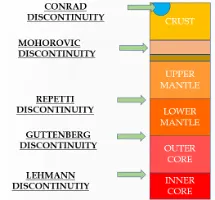
Key Discontinuities
Mohorovičić (Moho) Discontinuity:
o Separates the crust from the mantle (5–70 km depth).
o Seismic waves accelerate here due to denser mantle rocks.
Gutenberg Discontinuity:
o Core-mantle boundary (2,900 km depth).
o P-waves slow down, and S-waves disappear, confirming the outer core’s liquid state.
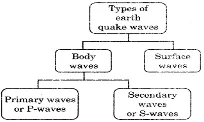
Earthquakes & Seismic Waves
(A) Basics
Focus: Subsurface origin of earthquakes.
Epicenter: Surface point directly above the focus.
(B) Wave Types
1. Body Waves:
o P-waves (Primary):
§ Longitudinal waves traveling through solids and liquids.
§ Speed: 5–8 km/s.
o S-waves (Secondary):
§ Transverse waves restricted to solids.
§ Speed: 3–4 km/s.
2. Surface Waves:
o Love Waves: Horizontal ground movement.
o Rayleigh Waves: Rolling motion causing maximum structural damage.
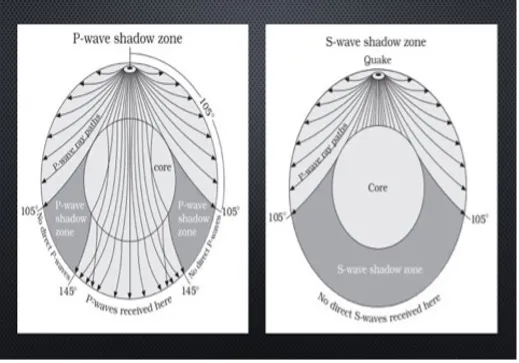
(C) Shadow Zone
Region (105°–145° from the epicenter) where S-waves are absent, and P-waves refract due to the liquid outer core.
Earthquake Measurement
- Richter Scale: Logarithmic scale quantifying energy released (magnitude).
- Mercalli Scale: Qualitative assessment of shaking intensity (I–XII).

Types of Earthquakes
- Tectonic: Caused by plate movements (e.g., subduction, rifting).
- Volcanic: Linked to magma movement and eruptions.
- Collapse: Due to cave/mine collapses.
- Explosion: Human-induced (e.g., nuclear tests).
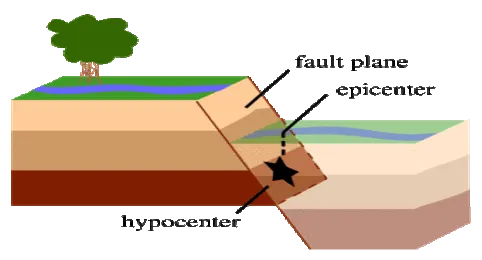
Relevance of Studying Earth’s Interior
- Resource Distribution: Mantle dynamics influence mineral and fossil fuel deposits.
- Hazard Mitigation: Insights into earthquakes and volcanoes improve early warning systems.
- Planetary Evolution: Clues about Earth’s formation and comparative planetology.
